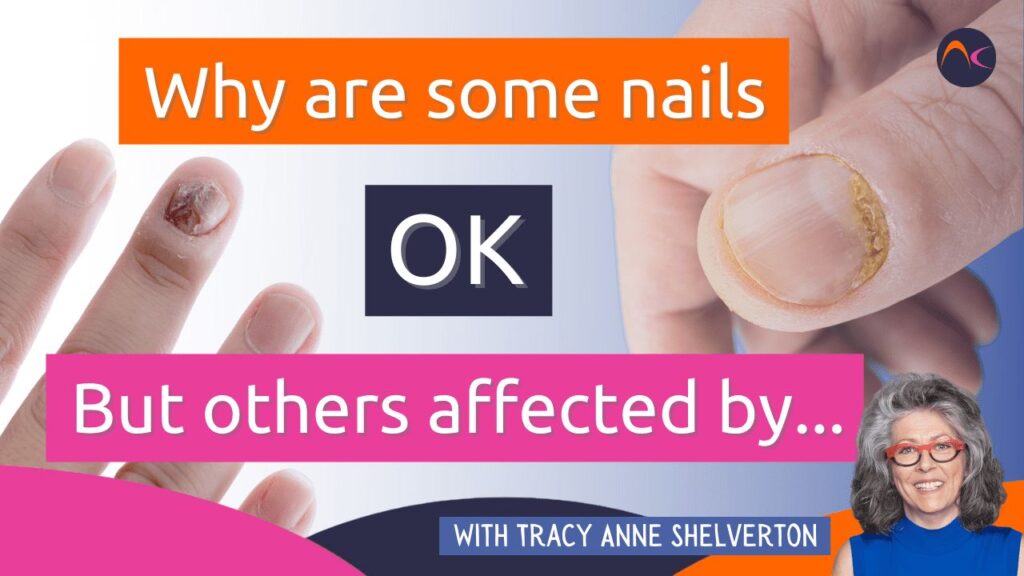Something we don’t usually reflect on, but is totally relevant in the nail studio or pedicure practice, is the number of nail units that we have and the way in which only some or all of them can be affected and/or afflicted by disease or damage and how that may or may not affect all the other nail units.
We have 8 nail units in our fingers and 2 thumb nail units
We have 10 toe nail units
That’s 20 nail units in total (I can hear you laughing, hang in here with me – this is important)
Its possible that one or more of our nail units can be affected by infection, disease and/or damage, but only infections are transient (traveling from one nail unit to the other)
Infections can be:
- Bacterial
- Fungal
- Viral
Diseases can be:
- Lichen Planus
- Alopecia areata
- Psoriasis
- Eczema
Damage can be:
- Broken nail plate
- Torn nail bed
- Fractured Distal Phalanx
Infections are transient – this means they can go from one nail unit to the next or from your hand to your foot, from a finger to your lungs or even cross from one human to the next via touch, air or fluid transfer.
A bacterial infection can be highly contagious and spread from one nail unit to the other but tends to be opportunistic, meaning it infects another area if the circumstances are good, maybe the skin is damaged or the nail plate compromised so there is a ‘way in’ for it.
[Dr Kenneth Todar PHD states: “Pseudomonas aeruginosa is an opportunistic pathogen, meaning that it exploits some break in the host defenses to initiate an infection. In fact, Pseudomonas aeruginosa is the epitome of an opportunistic pathogen of humans. The bacterium almost never infects uncompromised tissues, yet there is hardly any tissue that it cannot infect if the tissue defenses are compromised in some manner”]
A fungal infection can be contagious if you have open wounds or skin fractures or compromised nail plates on your hands or feet where fungal spores may decide to make their new home.
A viral infection is always infectious and not necessarily opportunistic like bacteria and or fungi but will jump from one place to the next given the chance any way it can.
Skin diseases like lichen planus, eczema, psoriasis and or alopecia can affect any or all parts of the nail unit, the nail plate will be effected according to the part of the nail unit that is diseased and its important to remember that it can be any of the 20 or all of the 20 nail units that are compromised, so you can have for instance 4 nails showing psoriasis pitting and the other 6 of the hands not and 3 toe nails showing psoriasis pitting and the other 7 not.
Damage whether major or minor effects only the fingers or nail units that are caught in the accident, you can close 2 fingers in the car door and the other 8 are not damaged simply because they were not caught in the car door or you can damage one nail unit with an efile by accident without damaging the other 19.
Where do I want to go with this?
We always have to remember – 20 nail units all function independently from each other – they do not communicate with each other in any way and although they are all similar, each nail unit has its own blood supply and nerve sensors, each nail matrix and or nail unit can become defect anyhow and for any of the above reasons, and plenty of reasons that I haven’t mentioned.
So, the next time a client says ‘Only two of them are like this, the rest of my nails are just fine’ you can explain exactly why that is possible.


